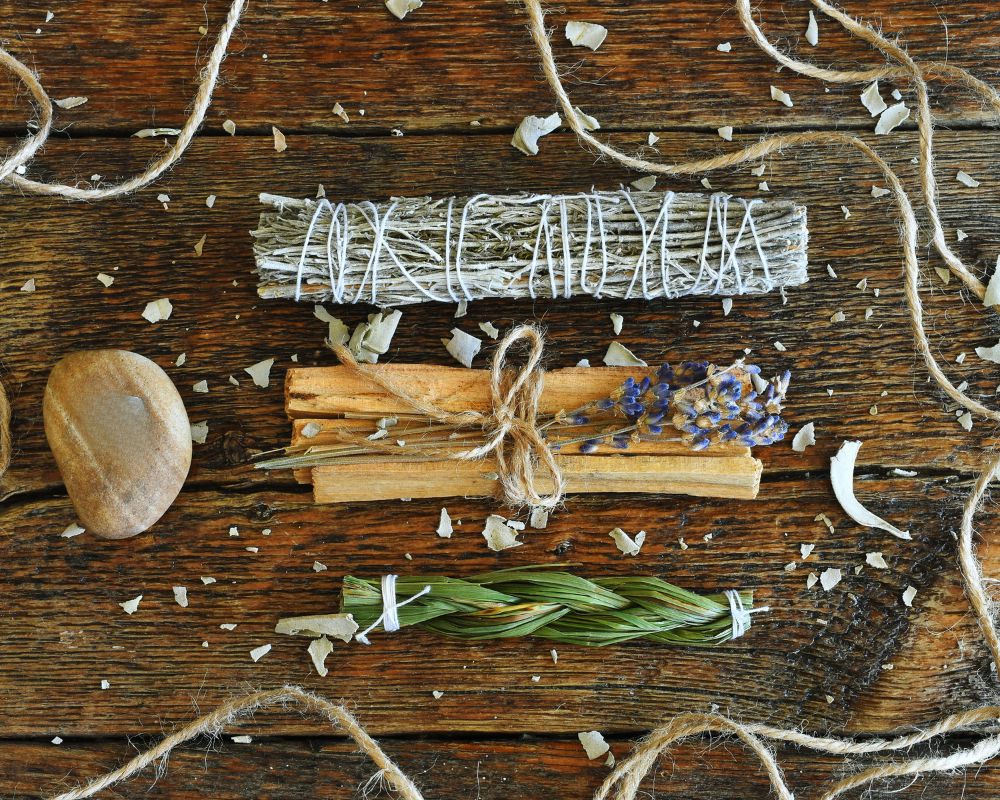What Is Sacred Smoke?
Across centuries and continents, cultures have burned herbs and woods to clear energy, call on Spirit, and honor the sacred. You may know it as smudging, saining, or simply cleansing with smoke—but each tradition has its own roots, and honoring those origins matters.
Let’s explore the stories behind six powerful smoke plants: White Sage, Sweetgrass, Palo Santo, Juniper, Cedar, and Lavender.
White Sage (Salvia apiana)
Used by: Indigenous peoples of the Southwest (Chumash, Cahuilla, Diné, Lakota)
White sage is a sacred medicine in many Indigenous traditions, burned for cleansing, purification, and protection. It's used to prepare for ceremony, clear negative energy, and bless people and places.
⚠️ Note: Due to overharvesting and cultural appropriation, white sage should be used respectfully and sourced ethically—preferably from Indigenous gatherers.
Sweetgrass (Hierochloe odorata)
Used by: Indigenous Plains and Woodland tribes (Ojibwe, Cree, Lakota, Blackfoot)
Sweetgrass is often braided and burned after white sage, to invite blessings, positive spirits, and gentle healing. It’s considered the “hair of Mother Earth”, with the three braid strands symbolizing mind, body, and spirit.
Palo Santo (Bursera graveolens)
Used by: Indigenous peoples of South America (Q’ero, Shipibo, Shuar)
Known as “Holy Wood,” Palo Santo is burned for spiritual purification, healing, and connection to Spirit. In shamanic traditions, it’s used in ceremony and energy work.
⚠️ Only dead wood is harvested sustainably—look for ethical sources to protect the species and its sacred legacy.
Juniper (Juniperus spp.)
Used by: Indigenous North American tribes (Diné, Ute, Hopi, Shoshone) and ancient Celts
Juniper has long been burned for cleansing, protection, and blessing. It is still used today in sweat lodges and spiritual renewals.
In Celtic tradition, particularly in Scotland, juniper was used in a practice called saining—a form of blessing through smoke and spoken prayer. Saining rituals were common during Samhain, births, and seasonal transitions.
Cedar (Thuja spp.)
Used by: Indigenous peoples across North America (Ojibwe, Lakota, Coast Salish, Cree), and European folk healers
Cedar is one of the Four Sacred Medicines for many Native tribes. It’s burned for spiritual protection, blessing, and cleansing negative energy. Cedar boughs are used in sweat lodges, home blessings, and healing rituals.
In modern Pagan and folk practices, cedar is sometimes used symbolically for protection and grounding.
🌿 We offer ethically sourced cedar wands in our shop — a beautiful way to connect to this sacred plant.
Lavender (Lavandula spp.)
Used by: Mediterranean cultures, modern witches, herbalists, and energy workers
Lavender is a gentle herb burned for peace, emotional healing, and relaxation. Though not part of traditional smudging, it’s a beloved addition to personal rituals, dreamwork, and self-love practices.
Honoring the Roots
As sacred smoke practices gain popularity, it’s vital to use them with respect and understanding. Here’s how:
- Use “smudging” only when referring to Indigenous ceremony
- Acknowledge European practices like saining when relevant
- Source herbs ethically and with gratitude
- Avoid overharvested or endangered plants
- Use sacred smoke with intention, respect, and reverence
From The Enchanted Alcove
Looking to bring sacred smoke into your ritual practice? Explore our ethically crafted cedar wands, herbal blends, and magical tools — each ritually prepared with care and respect.
Bless your space. Honor the earth. Carry the wisdom forward.
— The Enchanted Alcove
